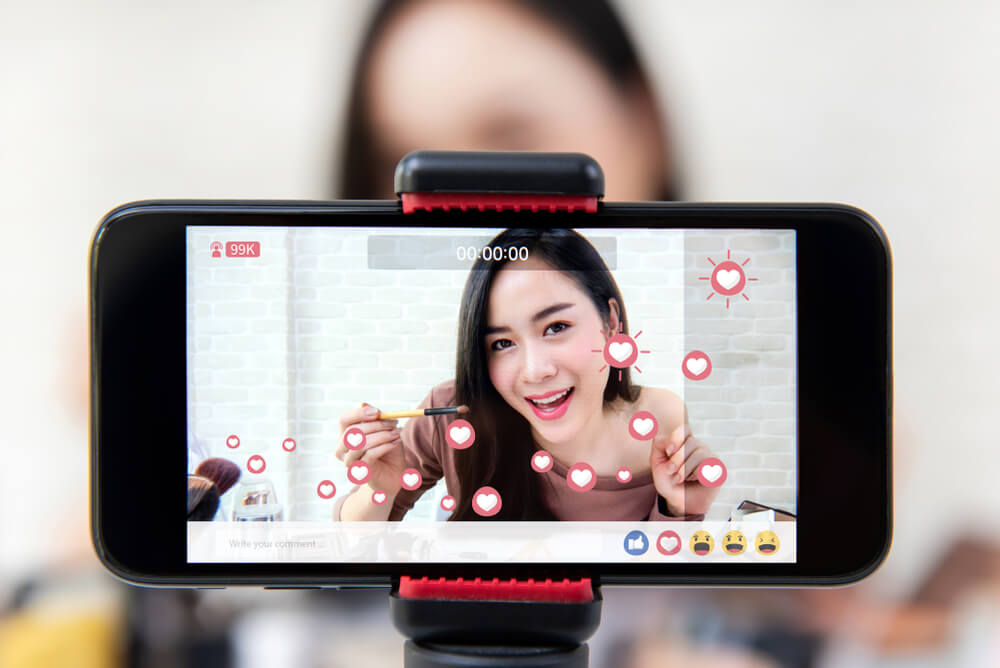
How Do The Best Paid Brand Influencer Collaborations Work?
Paid brand influencers drive consumer engagement and brand visibility. Such benefits make these individuals invaluable assets for businesses expanding their reach.
What is the secret to successful paid social media collaborations? This guide describes how the partnership works:
- Understanding paid influencer collaborations.
- Identifying and selecting the right influencers.
- Negotiating terms and compensation.
- Setting clear objectives and key performance indicators (KPIs).
- Crafting authentic and engaging content.
- Leveraging multiple platforms.
- Focusing on ethical considerations and transparency.
- Building long-term influencer relationships.
Read below to discover how paid brand influencers improve your marketing campaigns. Let’s go!
If you want to learn how Digital Authority Partners can increase your PPC effectiveness, watch this video!
Understanding Paid Influencer Collaborations
A paid brand influencer collaboration is an agreement between a company and an influencer. The influencer receives compensation, including cash, products, or other benefits. In exchange, they promote the business’s products or services.
The contract outlines specific deliverables. These include the number of posts, content guidelines, and campaign duration. The compensation distinguishes paid collaborations from organic ones, where influencers feature brands without financial incentives.
Paid social media partnerships often involve higher accountability. For instance, influencers must disclose their relationship with the brand. These collaborations also receive more significant creative direction from the business. After all, the content should align with its marketing goals and messaging.
Identifying and Selecting the Right Influencers

The most critical step in paid influencer marketing is selecting someone whose content fits the company’s values, audience, and goals to maintain the brand’s identity.
Matching the influencer’s demographics, interests, and tone with the target audience enhances engagement. It also fosters a genuine connection and develops trust and credibility with consumers. Lastly, finding the right influencers increases the collaboration’s success.
Follow these strategies to choose the right paid partners:
- Use marketing analytics, demographic data, and audience profiles from Instagram Insights, YouTube Analytics, and other third-party tools.
- Analyze an influencer’s audience to know if they align with the brand’s target market. Focus on their ages, locations, interests, and engagement rates.
- Look beyond follower count and examine their engagement metrics, such as likes, comments, shares, and saves.
- Evaluate an influencer’s content strategy. Determine whether their posts resonate with the brand’s tone, values, and message.
- Gauge an influencer’s success in past collaborations with sentiment analysis tools or brand-monitoring platforms.
- Review case studies, campaign performance reports, or testimonials of their previous partner brands. Did the paid partner meet the KPIs, such as increased brand awareness or conversions? Did they achieve specific campaign goals during the collaborations?
Negotiating Terms and Compensation
Initiate influencer negotiations by clearly defining campaign objectives, outlining specific deliverables, and setting realistic expectations for content creation. Discuss compensation based on various factors:
- Influencer’s reach
- Engagement rates
- Exclusivity
- Usage rights
- Complexity of deliverables
Agree upon a mutually beneficial arrangement according to your budget and the influencer’s value. Clarify deadlines, content guidelines, disclosure requirements, and performance metrics.
Consider these techniques when drafting influencer terms and conditions:
- Define the scope of work. Specify the number of posts and content type (e.g., videos, stories, blog posts). Determine the platforms and include exclusivity clauses.
- Detail the compensation structure, whether monetary, product, or a combination. State payment terms such as timelines, methods, and milestone payments. Add clauses regarding late payments or any additional fees.
- Outline the content creation process, especially draft deadlines, revisions, and final approvals. Specify whether the brand requires content pre-approval and the turnaround time for feedback and corrections.
- Follow the Federal Trade Commission’s disclosure requirements. Address legal or regulatory compliance concerns.
- Determine the KPIs that best measure collaboration success. These include engagement rates, reach, and conversions. Know the ideal reporting frequency and format for transparency and accountability.
Have legal counsel review the agreement so that it complies with local regulations and protects the interests of both parties. Either way, clear and comprehensive terms and conditions create a professional relationship. They also reduce misunderstandings and enhance collaboration.
Setting Clear Objectives and KPIs

Clear objectives and KPIs guide influencer marketing collaborations. They align the campaign with the brand’s goals, whether it be increased brand awareness, engagement, or conversion.
Defined goals also shape the content strategy. It dictates the content type, messaging, and calls to action (CTAs). Each post or video contributes meaningfully toward the intended results.
Determine the right KPIs and objectives for your social media strategies with these ideas:
- Make your goals specific, measurable, achievable, relevant, and time-bound (SMART). For example, increase online sales by 20% and social media engagement by 30% in three months.
- Harmonize the influencer’s campaign objectives with broader business goals. These might be driving sales, increasing brand awareness, launching a new product, or enhancing customer engagement.
- Pair your KPIs and objectives to measure the collaboration’s success accurately. For instance, relate engagement rates, click-through rates (CTR), conversion rates, reach, and impressions to sales.
- Set benchmarks based on historical data or industry standards for realistic expectations.
- Monitor KPIs throughout the campaign to promptly refine strategies.
- Use data analytics to effectively track KPIs.
- Adjust influencer campaigns based on real-time performance, audience feedback, or market shifts.
Adaptability improves a campaign’s effectiveness by aligning it with evolving brands and audiences.
Crafting Authentic and Engaging Content
Balancing branded content with an influencer’s unique voice creates an authentic and engaging copy. Giving the person creative freedom also maintains their connection with the audience while endorsing the business. It promotes genuine engagement and trust.
Integrate your message and values seamlessly into the influencer’s authentic style and tone with these techniques:
- Inform influencers to weave the brand’s message into personal stories or experiences.
- Assist influencers in creating educational content that aligns with the brand’s message. Tutorials and informative videos provide valuable information about your products and services.
- Encourage your paid partners to involve their audience in content creation through user-generated campaigns.
- Guide influencers on naturally embedding the brand into their content.
- Encourage them to engage their audience through brand-centric discussions, polls, Q&As, or live streams. Conversations around your values, mission, or influence build your community and authenticate your message.
Leveraging Multiple Platforms

Social media platforms offer diverse influence marketing benefits. They expand demographic reach, segment the audience, and increase engagement.
Leveraging multiple social media channels also means adapting content to the platforms’ unique formats and audiences to maximize the campaign’s impact and relevance.
Use these ideas to supercharge different platforms for paid social media marketing:
- Tailor content to fit each platform’s unique features, audiences, and content formats. For example, upload snappy videos on TikTok. Make posts visually engaging for Instagram or share a professional and informative copy on LinkedIn.
- Customize content formats to suit the platform. Use vertical videos or stories for Instagram and Snapchat. Produce longer-form videos for YouTube and concise, attention-grabbing captions for Twitter.
- Use consistent visual elements across platforms, such as color schemes and logos, to reinforce brand identity. Align the visuals with the campaign’s message.
- Adjust the tone and language to suit the platform’s audience and communication style.
- Maintain the campaign’s core message but customize the language, hashtag, or story to resonate with specific audiences.
Lastly, improve paid influencer collaborations with a cross-platform promotion. For instance, encourage Facebook audiences to engage with the brand’s content on Instagram through teasers, exclusive snippets, or enticing CTAs.
Focusing on Ethical Considerations and Transparency
Honesty and ethics are critical in developing audience trust in influencer marketing campaigns.
Transparent disclosures about sponsored content build credibility and foster authenticity and integrity between paid partners and their audience. Upholding ethical practices also empowers leads to make informed decisions.
Promote ethics and transparency in paid influencer marketing through these strategies:
- Distinguish paid collaborations from organic content clearly. Add #ad and #sponsored hashtags or “Paid partnership with [Brand]” at the beginning of social media posts.
- Follow local advertising regulations for proper content disclosure and transparency.
- Be authentic by aligning the brand’s content with the influencer’s style and voice.
- Train influencers on disclosure practices and ethical considerations. Help them understand the importance of transparent communication with their audience.
Regularly monitor influencer content for legal compliance. Enforce ethical guidelines through agreements and ongoing communication.
Building Long-Term Influencer Relationships

Cultivating long-term relationships with influencers offers numerous benefits. It allows influencers to better understand the brand’s values, products, and message. This knowledge enables them to create more authentic and relevant content.
Meanwhile, working with the same influencers on multiple campaigns fosters consistency and familiarity with audiences. It enhances brand recall and builds a more enduring connection between the influencer and the brand.
Establish long-term influencer relationships with these best practices:
- Openly and consistently communicate with them.
- Engage with influencers beyond campaign discussions. Show interest in their work and offer ongoing support or feedback.
- Provide them with exclusive access, sneak peeks, or early product releases to show your appreciation.
- Involve paid partners in strategic discussions. Seek their insights on specific campaigns and let them contribute ideas based on their audiences and expertise.
- Publicly acknowledge and celebrate influencer successes. Recognize their contributions through social media shoutouts or features. Highlight their work in case studies.
- Pay them in a consistent and prompt manner. Build a reliable compensation system that respects their professionalism and dedication. Doing this reinforces trust and reliability in the partnership.
These strategies build trust, mutual respect, and shared success. They encourage influencers to invest more in the brand’s growth through long-lasting collaborations.
Summing Up
Influencer collaborations succeed because of mutual benefits and shared values. Both parties prioritize authenticity. They create impactful, genuine content through comprehensive planning, strategic alignment, and transparent communication.
How could a strategic influencer partnership redefine your brand’s narrative and reach? Contact Digital Authority Partners (DAP) and work with a paid social media expert.
Want To Meet Our Expert Team?
Book a meeting directly here




